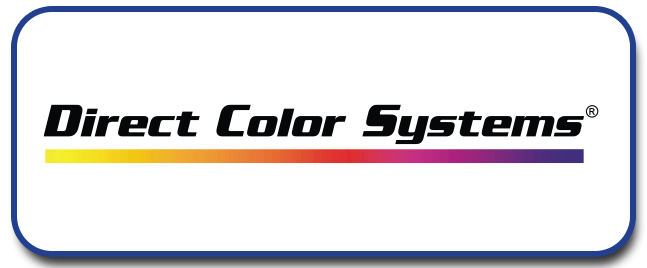Meredith-Springfield Solves Printer Problems with Flying Colors
Complex tooling solution results in reduced leak points, increased capacity
 Direct Color Systems® (DCS) engineers, manufactures and markets small and mid-format UV LED printers that employ cutting-edge technology to deliver rich, full-color images directly onto rigid and flexible substrates. Known for pushing the industry forward, they reached out to Meredith-Springfield for help overcoming some challenges with the ink storage system on their 1800 series of printers.
Direct Color Systems® (DCS) engineers, manufactures and markets small and mid-format UV LED printers that employ cutting-edge technology to deliver rich, full-color images directly onto rigid and flexible substrates. Known for pushing the industry forward, they reached out to Meredith-Springfield for help overcoming some challenges with the ink storage system on their 1800 series of printers.
Specifically, DCS was looking to improve the reliability and storage capacity of the ink system, while reducing assembly time and leak points. The experts at Meredith-Springfield met the challenge head-on.
“We engineered a complex tooling solution that enabled DCS to use two threaded caps held to tight tolerances for a leak-free design,” said Mel O’Leary, owner, Meredith-Springfield.

The new design uses custom blow‐molded HDPE tanks rather than stainless steel ink vessels that need to be assembled with gaskets and screws.
There are two easy-to-install caps on the top of the tank:
- The back cap has a dual‐purpose; a sip tube extends to the bottom of the tank and is connected to the ink line to supply ink to the print head. The ink tank level sensor is also installed into this cap.
- The front cap has a breather on the top to prevent a vacuum being created in the bulk ink tank. Removing this cap will allow the user to easily fill the 650mL capacity tank. A screen installed inside the neck of this port prevents any large particles from entering the tank and contaminating the ink system.
“Almost all connection points in this system use luer‐lock fittings, which makes it extremely simple to diagnose and service components, if necessary,” said Justin Pribanic, Director, Product Realization, Direct Color Systems.
Color Us Thrilled
We exceeded the client’s expectations, meeting both cost and delivery objectives of the project. Ultimately:
- Part count was reduced by 31 components per printer
- Labor was reduced by 50 minutes to build and test the tank sub-assembly
- Usable ink capacity was increased by 4x
- Leak defects were eliminated
“We were thrilled with the final solution developed by Meredith-Springfield,” added Pribanic. “We had two start-up issues during our beta run, which were both recognized, repaired and addressed in a way that we have had a 100% defect-free product since the series production release.”
About Meredith-Springfield
An SQF-certified plastic extrusion and injection stretch blow molding manufacturing and engineering company in Ludlow, Mass., Meredith-Springfield has built a reputation for providing superior, high-quality finished products and a hassle-free experience to companies across the globe.
The company’s core competencies include project management of extrusion blow molded articles from concept through commercialization, and creating process solutions to enable optimal manufacturing of the most difficult articles.
Meredith-Springfield offers the latest technology for molding PET and other resins to the existing client base and can take advantage of other global opportunities. Resin capabilities include HDPE, PP, PVC, PA, PET, EPET, TPE, TPU, ABS, LDPE
and Fluoropolymers.
Serving the medical, packaging, industrial, HBA and food industries, Meredith-Springfield consistently demonstrates its capabilities in world-class product design and manufacturing and deepens its national and international relationships. In addition, the company is also a consistent referral for companies of all sizes who need test-market quantities of custom blow molded prototype samples for research and development and out-of-the box concept development.





